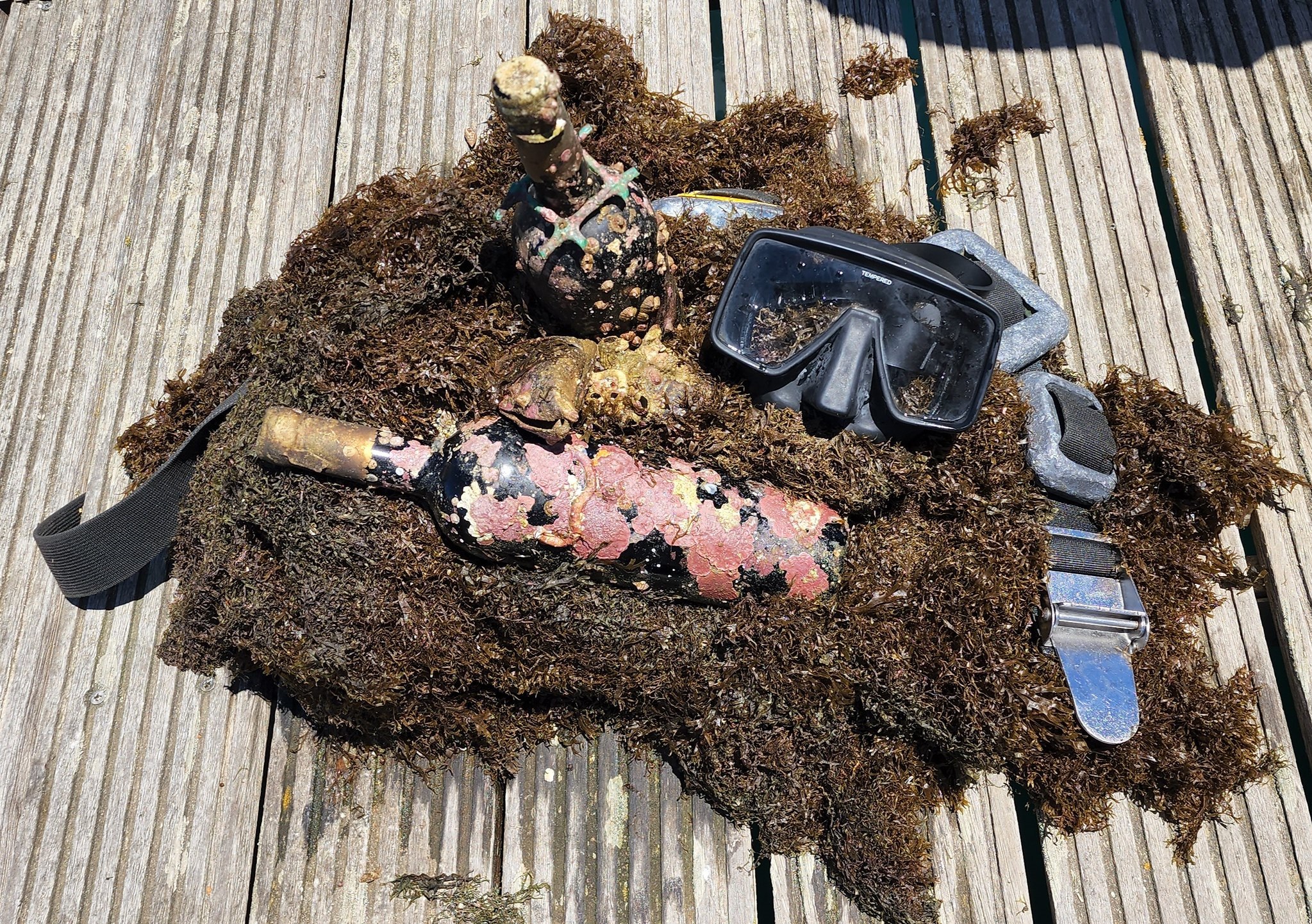Portugal is a popular travel destination, from Lisbon, Porto, and Douro in the north, to the Algarve in the south, and out to the Madeira and Azores Islands. Lesser-known Setúbal is a working port, a major commercial fishing center, and the 6th largest region for wine production in the country.
Setúbal is not a typical tourist destination and is often overlooked. Just a day trip from Lisbon, it’s worth spending a few days in, especially for those who like a more industrial feel. This is the place to escape crowds of tourists and to experience Portuguese daily life. The city is replete with history, nature, wine, fresh seafood, and even bottlenose dolphin sightings.
Setúbal is located on the peninsula of the same name, at the mouth of the Sadu River. To the west are the hills of Serra da Arrabida and the beaches of the Portino da Arrábida, and to the south is the Sado Estuary and the beaches of the Troia Peninsula. The region is less than an hour from Lisbon, accessible via bus, train, ferry, taxi, or car.
Experience Living History
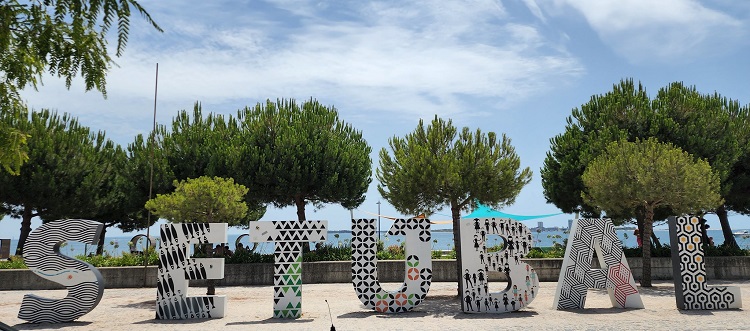
Setúbal was first settled by the Romans who built a military camp and a salt factory, since salt was used both as currency and to preserve fish. In the 14th century, it had become part of the Portuguese monarchy of Afonso Enriques, and by the 17th century, it had become an important shipping port for the country.
A day in Setúbal should start at the Livramento Market, a traditional city market that is considered the best covered market in Portugal. Located in an art deco building built in 1930, the interior walls are decorated with over 5,000 tiles depicting scenes from everyday life. In this vibrant market, you can buy fresh seafood, vegetables, fruits, pastries, and local handicrafts, or you can just observe the locals as they do their daily shopping.
From the market, you can continue down Avenida Louísa Todi, a wide pedestrian street surrounded by greenery. This road will lead you to the Praça de Bocage, the main plaza of Setúbal. Restaurants surround the plaza which is a popular destination for locals. From here, wander through the historic center of Setúbal with its ancient, narrow streets filled with shops, restaurants, and small houses.
The waterfront is a lovely place to stroll along. On one side, seafood restaurants line the street. It also leads to the Doca dos Pescadores fishing harbor marked by colorful dolphin statues.
For great views over both the Tagus and Sado estuaries, the Castelo de Palmela is in the village of Palmela, 9 kilometers north of Setúbal. In addition to magnificent panoramic views, the Castelo de Palmela houses the Igreja de Santigo Church and a museum. The old convent wing has been transformed into a luxury hotel, which makes for an ideal accommodation for the classic Winetraveler.
RELATED: 10 Authentic Things to Do in Porto Portugal
Unparalleled Nature
The district of Setúbal is considered a cradle of nature. It is not a beach resort town but there are stretches of coastline that include the Troia Peninsula and the coastline of the Serra de Arrábida. There are some beaches within walking distance, such as the Praia de Albarquel, a large, sandy beach to enjoy swimming and sunbathing. This beach is where the River Sado meets the ocean. Other beaches are easily accessible via ferry or water taxi. Along the banks of the Sado Estuary is the Albarquel Urban Park, which contains grassy areas intermixed with the Praia da Saúde.
The Sado Estuary is the second largest in Portugal. Due to its biological diversity and its rich ecosystem, much of the interior of the Sado is a protected area. There are areas of white sand beaches, dunes, and marshes. Being one of the largest wetlands in the country, there are more than 200 species of birds. There is also a wide variety of fish, crustaceans, and mammals, including the fox, badger, genet, European otter, and the Roaz do Sado dolphins, as well as flora, that inhabit the estuary.
On the western edge of Setúbal is the Arrábida Natural Park which covers the coastline for 18 miles, all the way to the village of Sesimbra. Hikers can head to Serra do Risco, the highest cliff on mainland Portugal at more than 1245 feet above the Atlantic. Beach lovers can find plenty of small, remote alcoves.
Just a quick ferry ride across from Setúbal is the tip of the Tróia Peninsula, considered one of Portugal’s best-kept secrets. The tip of the peninsula offers a number of modern hotels and a casino, but there are also white sand beaches, pine forests, and an 18-hole golf course.
Quench Your Thirst with Local Wine
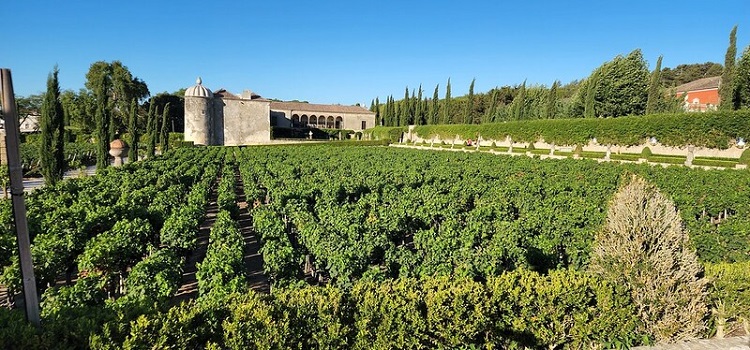
If you want to have an immersive experience in southern Portugal, we highly recommend you take a private wine tour (leaving from Lisbon) with a local guide from TakingUThere. Forget about the driving, and tailor a day trip to the region based on your personal travel preferences.
The Setúbal region produces 60% red wine and 35% white wine. The remaining 5% is for Muscatel de Setúbal, a fortified wine that has been produced for 115 years. The first vineyards date back to 2000 BC. By 1400, shipping voyages gave origin to Muscatel de Setúbal. In 1907, Moscatel de Setúbal became a demarcated region.
Setúbal has a warm Mediterranean climate that is tempered by the Atlantic Ocean to the west and the Estuaries of the Rivers Tagus and Sado to the east. The plains, which make up 80% of the Setúbal region, are slightly warmer with less rainfall compared to the cooler rolling hills of the Serra da Arrábida. The soils were formed by sea deposits and alternate between ancient sands in the plains and limestone and clay in the hills.
In the past, Setúbal was a bulk wine-producing region, but that has shifted over the last 20-40 years. Today Setúbal wines are produced under two DOCs and one IGP. The Palmela DOC covers white, red, rosé, and sparkling wines, grown both in the sandy plains and the hills. The dominant white grapes of Palmela DOC are Fernão Pires, Arinto, and Moscatel. The primary red grape is Castelão which must be a minimum of 67% in wines and is blended with Trincadeira, Touriga Nacional, Alicante Bouschet, Syrah, and others. The Palmela DOC red wines are structured wines with fruit-forward flavors of cherry, currant, raspberry, candied plum, blackberry, and pine nuts.
Setúbal DOC is a designation for fortified wine. This can be the white fortified wine from Moscatel de Setúbal or the red fortified wine from Moscatel Roxo. For these wines, the fermentation is stopped by the addition of grape brandy and the wines are characterized by an exotic, perfumed nose of flowers, honey, dates, and orange blossoms, as well as dried fruits, coffee, and nuts.
If you aren’t doing a guided trip, we recommend renting a car to explore all the wines from Setúbal. First, head to the town of Palmela and drive to the Casa Mãe da Rota de Vinhos, or Wine Route House. This wine shop houses numerous wines from the region, and they are available for tasting or purchase. It is also possible to visit some of the local wineries. Here are five of our favorites:
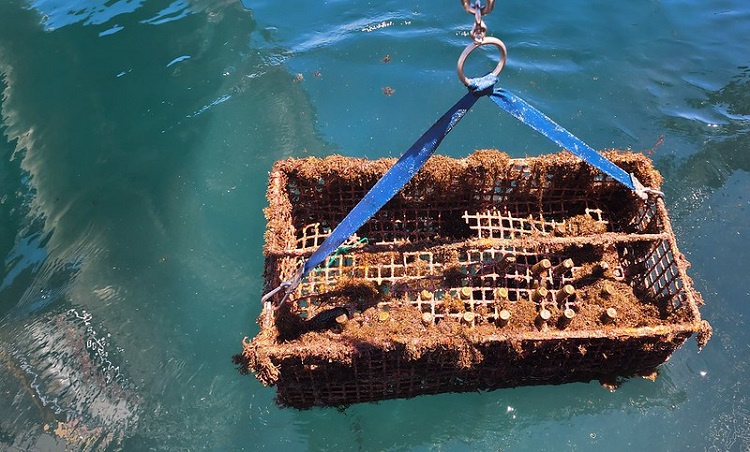
Exceptional Wineries to Visit in Setúbal
José Maria da Fonseca was founded in 1834 and is the oldest table wine company in Portugal. JM da Fonseca was the first to bottle red wine in Portugal in 1850 with Periguita. At the time, only Madeira and Port were bottled, and the rest was bulk wine. JM da Fonseca also started the infamous Lancers sweet rosé table wine in 1944. The family-owned company is based in the village of Azeitão on the Setúbal Peninsula and is now in its 7th generation. Sixth-generation Domingos Soares Franco was the first Portuguese person to graduate from UC Davis. A visit to JM da Fonseca includes a guided tour through the company museum. This is not only a good way to learn the history of the producer but to learn the history of the region as well.
Bacalhôa Vinhos de Portugal, SA is one of the largest wineries in Portugal with properties in seven Portuguese wine-growing regions, including Setúbal. Schedule a visit to the Bacalhôa Palace, a 14th-century property that belonged to João, Infante of Portugal, son of King D. João. It was passed down through generations and then sold to another Portuguese family in the 1500s. In 1936, the Bacalhôa Palace was bought and restored by American Orlena Scoville and in the 1970s her grandson began crafting the property into one of the largest wine producers in Portugal. The architecture of the palace, as well as its decoration and gardens, have been influenced over the centuries by the different owners, inspired by their travels through Europe, Africa, and Asia.
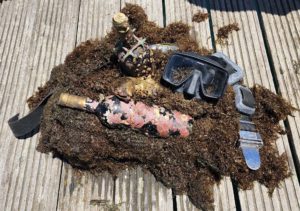
Herdade do Cebolal, which means onion farm, is owned by 5th generation Luís Mota Capitão who is following in his mother’s footsteps. With 85 hectares located in the southern part of the Setúbal region, Luís practices organic and biodynamic farming. He has created a permaculture by building a 65-hectare forest around his 20-hectare vineyard, creating a specific microclimate with unique humidity and water conditions.
If that wasn’t unique enough, Luís, as well as some other local producers, have gone as far as to age some of their wines off the coast of Setúbal. The bottles are placed between 45 to 131 feet below sea level where the movement of the sea affects the bottles. At the same time, coral attaches to the glass, making each bottle a piece of art. Lucky visitors occasionally have the opportunity to taste these wines that are brought up after aging from the bottom of the sea. His organic focus also includes recycling glass and using beeswax on the bottles. In addition to producing wine, Luís is also a cork producer.
Casa Ermelinda Freitas is in Fernando Pó, in the municipality of Palmela. Casa Ermelinda Freitas is a family-owned company with more than 550 hectares of vineyard planted for 29 different grape varieties. The winery was established in 1920 by Leonilde Freitas and is today run by his great-great-granddaughter Leonor Freitas. A visit includes a tour through the vineyards and the Museum of Memories which shows the family’s evolution from producing bulk wine to branded wine.
Venâncio Costa Lima, established in 1914, is one of the oldest wineries in the Palmela region. Founded by Venâncio da Costa Lima, he left the winery to his six nieces and nephews. Today the 4th generation of the Costa Lima family run the business. A visit to Venâncio da Costa Lima includes a wine tasting in the “Old Cellar,” where the barrels of Setúbal Moscatel age. The visit can also include tasting regional products, such as the Azeitão cheese, homemade bread, and smoked sausages.
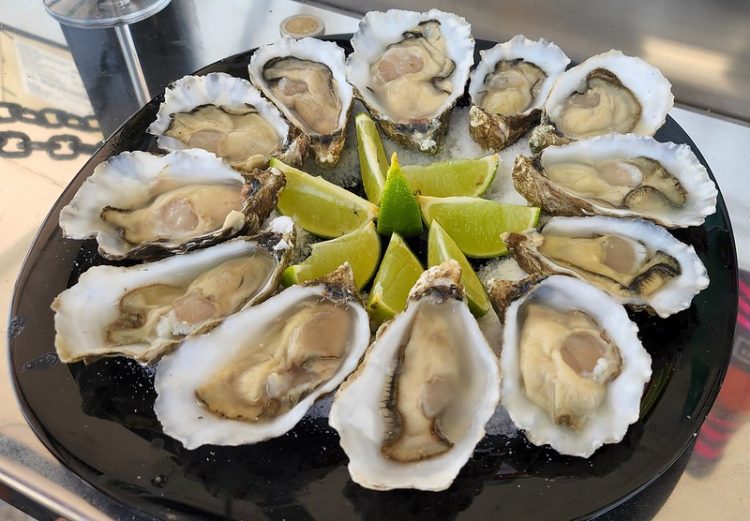
Satisfy Your Palate with Fresh Seafood
Setúbal was once the heart of Portugal’s fishing industry and is still referred to as “the land of fish.” The cuisine of Setúbal is based on fish and shellfish and the most famous dish is fried cuttlefish, or “choco frito.” Everywhere you walk in Setúbal, you will see signs for choco frito.
Ostras Sobre Rodas (Av. José Mourinho, 122, Setúbal): Located on the waterfront, ‘Oysters On Wheels’ was opened by João Lopes four years ago. This casual spot on the beach serves fresh local Sado oysters, as well as wine and beer, from a fully self-sustaining mobile home.
Peixoco (Av. José Mourinho, 28, Setúbal): Peixoco Restaurant is a modern fish restaurant that serves fresh, local fish from non-endangered species.
Xtória (Rua Guilherme Gomes Fernandes 17, Setúbal): With a menu that changes every three months, Xtória serves up creative and colorful dishes featuring local, seasonal products.
u Tópico (R. de Arronches Junqueiro 115, Setúbal): u Tópico is a charming restaurant off a small narrow street in the historic part of Setúbal that offers small Mediterranean and Portuguese dishes.
Restaurant De Pedra e Sal (Largo Dr. Francisco Soveral, Setúbal): A popular restaurant in the heart of Setúbal, the signature dish of Restaurant De Pedra e Sal is beef cooked on a salt stone.
O Farol (Portinho da Arrábida Road, Azeitão): Located in the Arrábida Natural Park in the village of Portinho da Arrábida, you can get to O Farol via a taxi boat or a taxi from Setúbal. Located on the beach, the view is spectacular as fresh fish and seafood are enjoyed.
Dolphins in the Wild

The Sado estuary is home to a pod of 28 bottlenose dolphins. Sheltered from the Atlantic Ocean with an abundant supply of food, this is one of the few places in the world where a pod of dolphins actively lives within a freshwater estuary. Watching the dolphins in their natural habitat as they swim, hunt, and play is an unforgettable experience to be enjoyed by people of all ages.
There are several highly-rated boat companies departing from the Porto de Pesca de Setúbal that offer three-hour dolphin-watching tours that take guests out on boats to find the dolphins. Many charters boast a 95% spotting rate, but the dolphins live in the wild and there are no guarantees to see them.
Vertigem Azul is a company with a 98-99% successful sighting rate over the past few years. Their sailboat catamaran departs from Setúbal or Troia. The award-winning company has been observing dolphins for almost 25 years and has a mission to contribute to the monitoring of the population of Sado Dolphins while offering sustainable tours that are in harmony with nature. The staff are marine biologists and students who provide insightful information about the dolphins. Once the sailing is underway, you can sit back and enjoy the sound of the ocean until the dolphins are spotted.
Accommodations, food, and wine are all available at a good price because Setúbal is not a well-known tourist destination. So, head off the tourist route and relax a bit. From history and nature to wine and fresh seafood, Setúbal is a region worth spending more than one day in.
Frequently Asked Questions about Visiting Setúbal
You are reading “The Best Things to do in Setúbal Portugal” Back To Top
reasons to visit Setúbal: trending destinations in Portugal
If you enjoyed this guide, make sure you register to become a Winetraveler for free! You’ll get access to all of our content and receive useful guides and inspiration for travel around the world. Be sure to follow along with us on Instagram as we continue to feature more exciting destinations.
